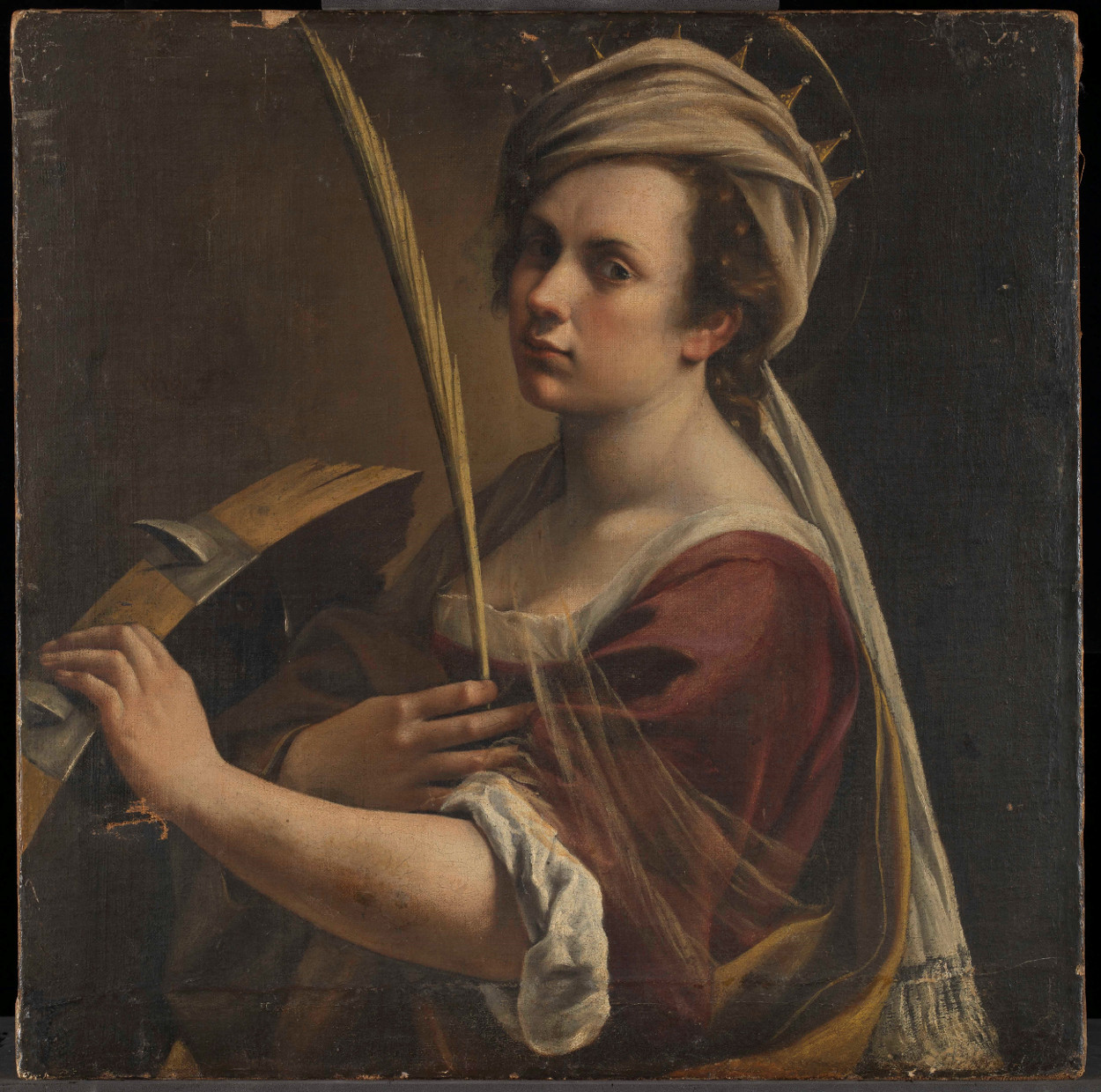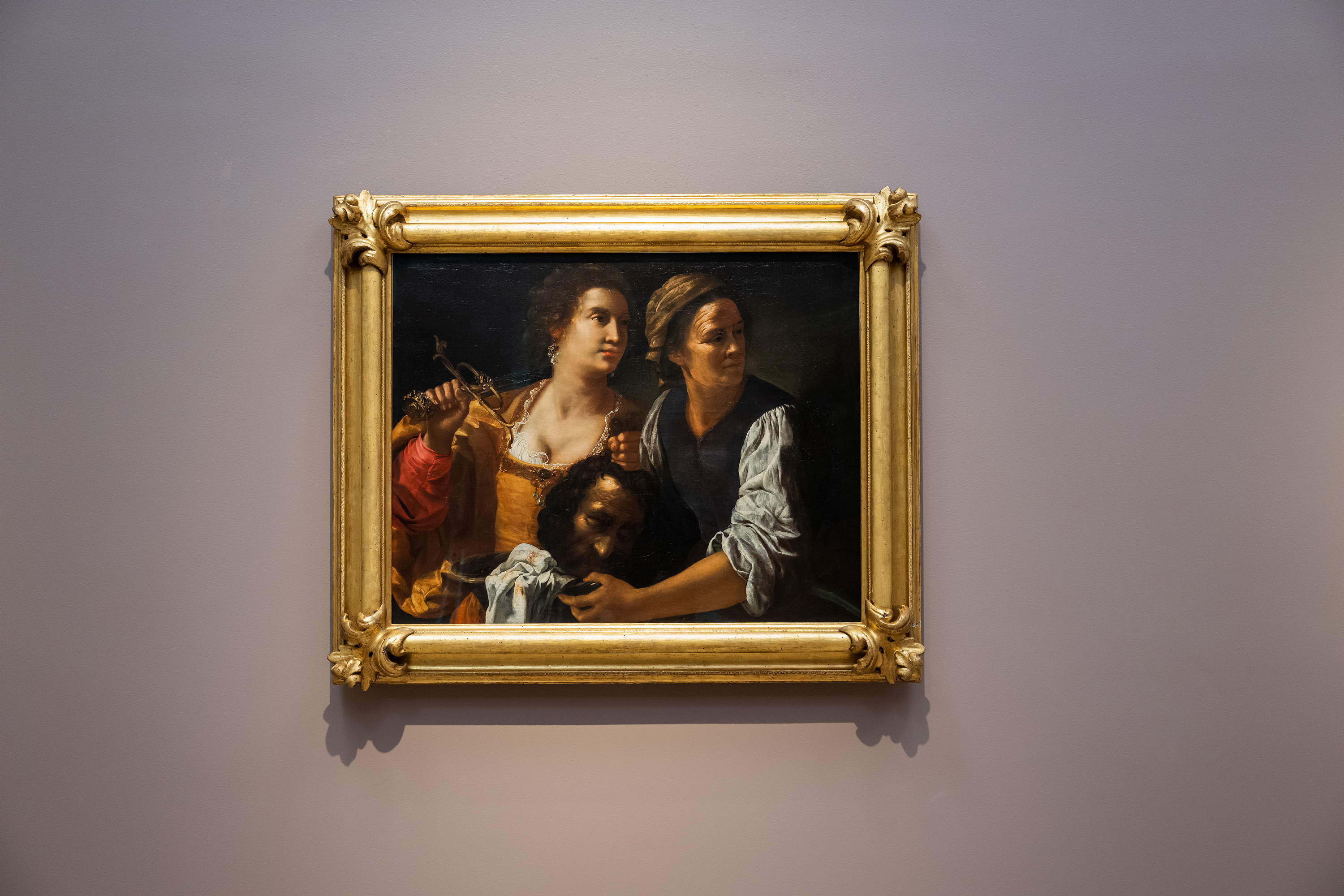Artemisia Gentileschi, Samson and Delilah, Ca 1630-1638, Oil on canvas, 109.5 x 90.5 cm, Intesa Sanpaolo Collection Galleries of Italy – Naples Intesa Sanpaolo Artistic Heritage Archive | Photo: © Luciano Pedicini, Naples
19 years after the violence suffered by Agostino Tassi, with the consequent process that had so many repercussions on her life and her painting, the precociously talented Roman painter made her entrance into the city of Vesuvius which still retained traces of the great artistic fervor by Caravaggio, Annibale Carracci, Simon Vouet.

Artemisia Gentileschi, Self-portrait as Saint Catherine of Alexandria, 1615-17, oil on canvas, 71 x 71.5 cm | © The National Gallery, London
Three centuries after that stay, Gentileschi returns to the city thanks to an exhibition that, from 3 December to 20 March, will bring a selection of about fifty works to the Gallerie d’Italia in Naples, the Intesa Sanpaolo museum – 21 of which by Artemisia alone. – coming from public and private, Italian and international collections.
The path, entitled Artemisia Gentileschi in Naplescurated by Antonio Ernesto Denunzio and Giuseppe Porzio, and which sees Gabriele Finaldi as specialist advisor, as well as being a fascinating journey through the painter’s Neapolitan years – between 1630 and 1654, interrupted only by a London interlude between the spring of 1638 and that of 1640 – is above all an opportunity to learn about the updating of scientific studies on the subject.
In fact, an intense scientific investigation and archival research activity preceded the realization of the exhibition, which returned new and important material to shed light on the biography of Artemisia. Now the circumstances of her arrival in Naples in 1630, directly from Venice, are clearer. The studies also made it possible to shed light on the extreme years of the painter, characterized by economic difficulties, and on the private affair concerning the concubinage of her daughter Prudenzia Palmira and the shotgun marriage following the birth of her nephew Biagio, in 1649.
The Neapolitan itinerary will allow the public to learn more about the role of the viceregal and bourgeois clients, therefore about the relations between Artemisia and the literary academies, which already in life contributed to increasing its fame. This is why the exhibition catalog, created by Edizioni Gallerie d’Italia | Skira, which sees the participation of internationally renowned curators and scholars, becomes a fundamental tool also for the continuation of studies, thanks to an accurate documentary register.
To the works created by the seventeenth-century lady of painting, the path in Naples will be accompanied by works carried out by leading artists, closely connected to her, active in the city of Campania in the same years as the painter, such as Massimo Stanzione, Francesco Guarino, Andrea Vaccaro, Paolo Finoglio, or “Annella” Di Rosa, the greatest Neapolitan artist of the first half of the seventeenth century, now rediscovered, and also a victim – according to an ancient yet unreliable tradition – of gender violence.
The Neapolitan parable of the “painter” with its vertices and its still problematic aspects takes place in the path through masterpieces such as the youth Saint Catherine of Alexandriarecently acquired by the National Gallery in London, and background of the exhibition, and more Saint Catherine of the Nationalmuseum of Stockholm or the Judith and the handmaid with the head of Holofernes of the Nasjonalmuseet in Oslo.

Artemisia Gentileschi, Judith and her handmaid with the head of Holofernes, 1639-1640, Oslo, National Museum | Courtesy National Museum
Among the large and rare public commissions of the painter, the exhibition will unveil theAnnunciation di Capodimonte, and two of the three monumental canvases painted between 1635 and 1637 for the choir of the cathedral of Pozzuoli, the San Gennaro in the amphitheater ei Saints Proculus and Nicaeathe latter restored for the occasion.
The exhibition at the Gallerie d’Italia in via Toledo was born as an in-depth study of the monographic that the National Gallery of London dedicated to the artist in 2020 and includes, among the collateral activities, an important international study conference.
The exhibition can be visited, starting from December 3, from Tuesday to Friday from 10 to 19, Saturday and Sunday from 10 to 20. Last admission one hour before closing.
![]() Read also:
Read also:
• In Naples, winter belongs to Artemisia
• A new painting by Artemisia enters the collection of the National Museum in Oslo

